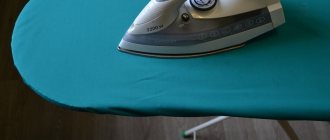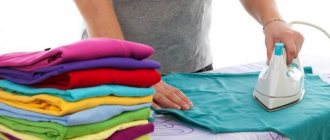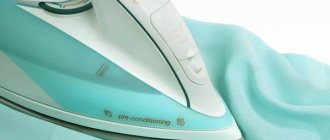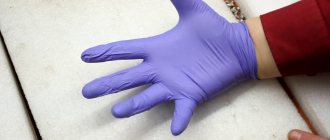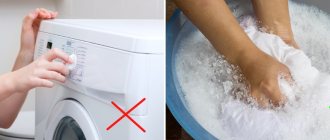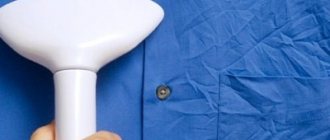Most young housewives, when asked how to iron a shirt without an iron, widen their eyes and shrug. But their mothers, and even more so their grandmothers, confidently name five methods. Meanwhile, if you think carefully, you can find at least a dozen ways to iron clothes without the aforementioned electrical appliance.
Do you think it has always existed in the home? A little over 100 years ago, women used huge cast-iron machines that were heated in the oven for half a day. The process of ironing only relatively recently became fast and enjoyable, namely in 1882. It was then that the electric iron was first patented.
Of course, only rich people could afford such pleasure. However, housewives with an average income also knew very well how to quickly iron a shirt without an iron. Today, these life hacks can also come in handy, for example, if your iron suddenly breaks or you are on the road.
Read and remember!
It would seem that how is it even possible to iron without an iron?
All photos pixabay.com
There are millions of homes that don't have an ironing board because you don't have the space to store one, you don't have enough money, or you just hate ironing. There are those who don’t have an iron or even time to buy one. If you are one of those people for whom an ironing board is not a friend, and you have never seen an iron in your life, then these chips are for you.
Curling iron or hair straightener
If you don’t have an iron at hand, but have another electrical device, for example, a hair straightener, you can iron a small item with it. But very carefully! Clean the plates from styling products and heat to medium temperature. The one you use on your hair is ideal. Gently run the straightener over the T-shirt, preferably from the wrong side.
Be careful! This method can very well smooth out wrinkled fabric, but there is a high risk of burning it.
Just a hard surface (no, it's not that simple)
A hard, flat surface is the key to successful ironing. You can use a wooden or tile floor, table or other kitchen surface. Carpeting or a bed can work well as long as there are no sharp, hard creases in the clothing - those that do need a firmer surface.
Whatever you choose, however, you must coat the surface to protect it from the heat and steam from the iron. Never iron directly on wood or stone surfaces, carpet or bedding!
Alternative to a household appliance
Below are ways to iron clothes without an iron. Some of them take a long time, and some only take a few minutes. You should choose them depending on what you have at hand and how much time is left before leaving.
Hot iron mug
In ancient Russia, our ancestors smoothed clothes this way: they poured hot water into an iron mug and ran it over the fabric . This method is still suitable today, it is simple and fast.
Just don't rush: the hot container requires attention, otherwise hot water will end up on your shirt or hands.
Not only a mug, but also any pan is suitable for ironing . The larger its diameter, the more tissue area it will capture at one time. A kettle that boils water on the stove is also suitable.
The bottom surface of a mug, pan or teapot must be spotlessly clean, otherwise it will contaminate the shirt, and the fabric, like the mood, will be hopelessly spoiled.
Ironing using a pan of hot water:
Steam in the bathroom
This method is for those who have at least half an hour before leaving . You need to fill the bath with hot water and hang a shirt over it on hangers.
The steam helps straighten the folds, the fabric will stretch out and after 20 minutes it will look like it has just recently been carefully ironed.
You should not put on your shirt as soon as it has been ironed. It has been saturated with water vapor and is now wet. You need to remove it from the bathroom and wait for it to dry.
This method involves the use of large volumes of water . If you need to iron a shirt outside the home or if there are water meters, before using this method you need to assess your willingness to pay for this method of ironing clothes.
There is also a faster way to expose clothes to steam: just boil a kettle and place a wrinkled shirt under the steam from the spout. You must act carefully so as not to get burned.
Self-smoothing solution
The liquid is prepared simply: you need to dissolve a little vinegar and fabric softener in water , then mix thoroughly and pour the resulting solution into a container with a spray bottle.
Next, you need to moisten a neatly laid out shirt with the solution (you don’t have to worry about ruining its appearance: there will be no stains on the fabric) and wait for it to dry. The wrinkles will be smoothed out and the clothes will look neat.
Instead of a solution, you can spray plain water on the fabric and dry it with a hairdryer . The effect of this action will be worse than after a vinegar solution, but will still be noticeable.
Stretching and pressing
This method is for those who discovered that the iron was broken the day before, as it takes a lot of time.
You need to carefully lay the shirt down, straighten out every fold, and place some heavy and large object on top so that its surface completely covers the clothing.
A good option here is a mattress so that the clothes are under the sleeping person all night . The effect will be enhanced if, before using the press, you spray your shirt with a vinegar solution or just water.
Wet towel
Another way for the leisurely. You need to wet a terry towel and squeeze thoroughly. Next, spread it on a flat surface (floor, table, bed), and put a shirt on top, carefully straightening out the folds. When exposed to moisture and steam, the fabric will smooth out.
This process is quite lengthy, requiring one to two hours. After this time, the shirt will be smoothed, but very damp. You will need to dry it on hangers in a well-ventilated area.
Ironing on a damp towel is intended for clothes made of wool, but cotton and synthetics are also suitable.
Hair straightener
The device that is used for straightening or curling hair is also useful for ironing shirts.
First you need to clean the inner surface of the tongs so that stains do not appear on the fabric , then heat the device to a high temperature and, holding the clothes with it, run them from top to bottom.
It is convenient if the shirt hangs on hangers and not lies on a horizontal surface.
It is easy to iron the sleeves, collar and bottom edge of clothing , but it will be difficult to straighten other, larger and wider areas. This method is suitable for smoothing out individual large folds, for example, when the item was folded into a tight roller.
How can you smooth it with a hot light bulb?
This method is similar to using hot iron cookware. Here you need to either unscrew the light bulb (before this, it is important to wrap your hand in a towel, because it is hot!) and move it over the fabric instead of an iron, or lift the clothes to the lamp and vigorously move the clothes over it.
It is advisable that the wrong side of the shirt touches the surface of the light bulb to protect it from stains. It is important to wipe the lamp with a damp cloth before doing this to remove any accumulated dust.
Body heat
You can put a damp thing on yourself: body heat will smooth out creases . This is not the most pleasant method, but it is effective.
If you don’t have the time or desire to tinker with hair curlers, a boiling kettle or a hot light bulb, this method helps out.
If you first spray the fabric with a vinegar solution, the result will be improved . True, you will have to inhale vinegar fumes, which is unpleasant.
Ironing blanket
Aliexpress
The ideal covering is an ironing blanket. It sounds strange, but it is true and really very convenient. Available in several sizes, ironing blankets are typically made from silicone-coated cotton that is heat and burn resistant. Many are coated with non-slip foam, making ironing easier. Blankets can be easily folded and put away.
Even if you have an ironing board, there are times when you don't want to set it up just to quickly iron a collar or iron a single crease. An ironing blanket will help you with this.
Wetting
If the iron may indeed not be nearby, then you can always find water. This is not the fastest way, because the clothes must then dry out. Wet your hands with water and smooth out the creases thoroughly. At the same time, you can remove stuck lint and animal hair from clothes. Hang the clothes on hangers and wait to dry.
Towel
If you don't have an ironing blanket, you can use a very thick cotton towel, preferably white. If your towels are not thick, fold two or three thinner towels together to create a base. You'll want to use white or off-white towels to prevent color shifts between the towel and the clothes you're ironing, especially if you're using steam.
Now that you have figured out the ironing surface, you need to pay attention to the iron. When ironing, the iron should be lowered when moving from one area of the garment to another.
What if you don't have an iron or are basically against it?
Useful Tricks
To avoid many problems with clothes wrinkled during wearing, washing, and transportation, just follow some simple tips. And then you won’t need to frantically look for ways to iron without an iron.
Proper drying after washing
The appearance of things depends on the drying of washed clothes and their proper handling. It is important to prevent deformation, creasing and wrinkles on the fabric - when drying, all of them will certainly appear.
Composition of things
The type of fabric determines how much it wrinkles and withstands the rigors of wear and transportation. The addition of synthetics to fabric increases the resistance of clothing made from such fibers to negative influences. Simply put, you don’t have to iron your clothes every day.
How to fold correctly when traveling
Washed and ironed clothes must be folded in a special way. Tamping, squeezing things in according to the principle “it doesn’t matter how, as long as it fits” is not allowed. There are several ways to minimize wrinkles on things. For example, trousers are neatly folded along the arrows, and the sleeves of T-shirts and shirts are folded. The clothes can then be rolled up.
Washing machine settings
It turns out that you can set the initial settings for proper drying directly in the washing machine. To do this, the maximum spin speed mode is set, which allows you to reduce the drying time of clothes. Some models are equipped with a special function for “folding out” clothes. The disadvantage of these methods is that their use negatively affects the fibers, injuring the tissue.
Preparing a blouse for ironing
You should not iron a worn blouse. Any stain, dirt, sweat, under the influence of high temperature will penetrate deep into the structure of the fabric.
To properly iron a shirt, follow these rules:
- Wash the product.
- Do not wring or twist the fabric. Hang the blouse on hangers, fastening all the buttons, straightening the collar and cuffs. The item will retain its shape and will wrinkle less. When drying on a line or battery, hard creases form that are difficult to smooth out.
- Do not let the shirt dry completely; it is better to iron it slightly damp. For dried fabric, prepare a spray bottle of clean water.
- Remove lint and protruding threads so that they do not stick to the soleplate of the iron.
- Unfasten all fasteners.
It is enough to iron a thin silk shirt on one side; denser ones are ironed on both sides, with the exception of places where convex decorative elements, embroidery, and lace are located. For delicate material, you will need a cotton or satin napkin as a spacer between the blouse and the soleplate of the iron.
Composition for ironing clothes
A special solution will help you iron large items of clothing or home textiles. Prepare a solution of equal parts water, table vinegar and fabric softener. Pour the resulting mixture into a spray bottle and thoroughly treat the fabric, paying attention to strong folds. Don't worry: the solution won't leave any residue.
You can purchase a special composition. It is sold at the hardware store. It's called Swobb. Use it for natural fabrics. With its help you can iron not only clothes, but even bed linen, tablecloths and curtains. The dampened textiles must be hung straight, without creases: clothes on hangers, linen or tulle on a baguette or crossbar. According to customer reviews, the product can really remove even the deepest wrinkles.
